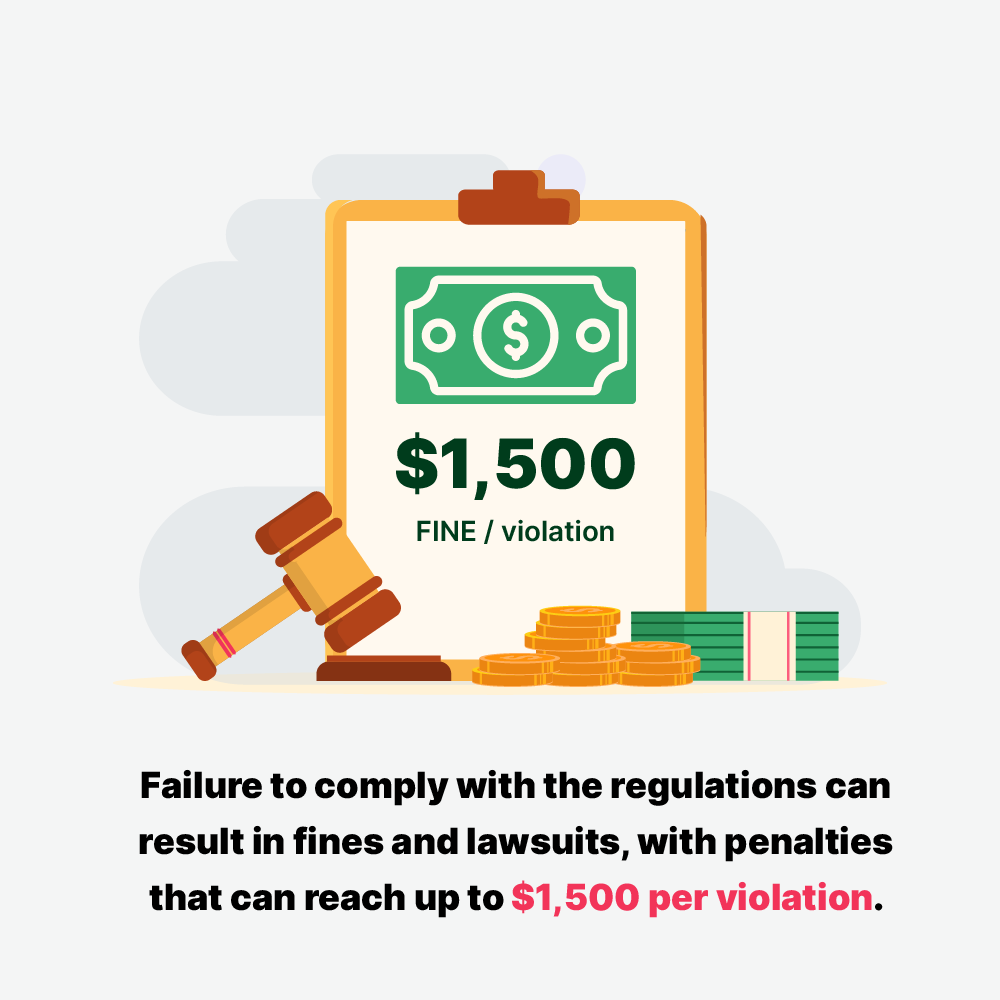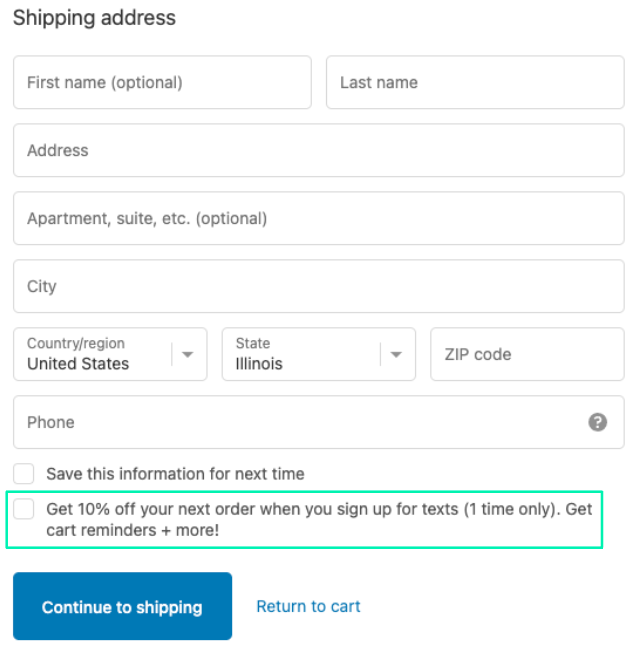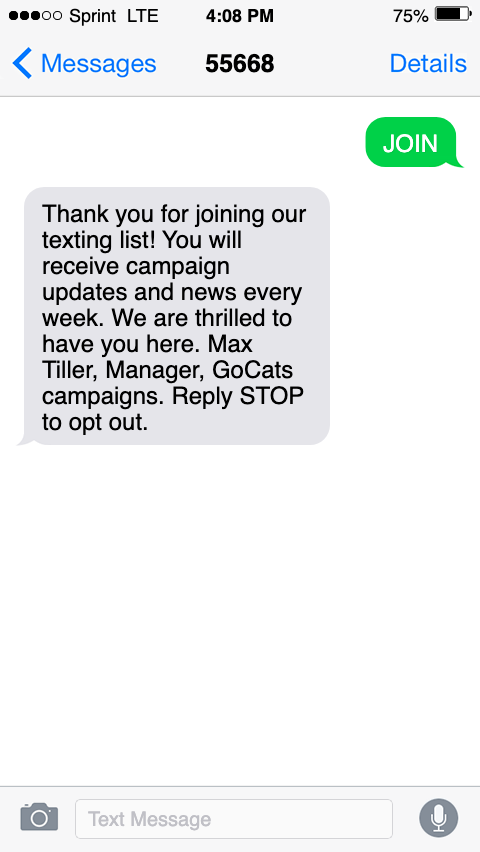Table of Contents
Did you know that around 45% of people who receive SMS marketing messages actually respond to them? This means text message marketing has the potential to be highly effective in engaging with your audience and driving conversions. In fact, 91% are interested in receiving text messages from businesses. With such high engagement rates, it’s not surprising that many organizations are turning to SMS as a communication channel.
However, when you send text messages, it’s crucial to abide by the Telephone Consumer Protection Act (TCPA) regulations to avoid any legal or financial consequences.
These regulations apply to
- Businesses of all sizes,
- Non-profit organizations,
- Political campaigns, and
- Other organizations that engage in texting as a means of communication.

Failure to comply with the regulations can result in fines and lawsuits, with penalties reaching up to $1,500 per violation.
In this blog post, we dive deep into the TCPA regulations, how they can impact your business, and the steps you can take to stay compliant.
What is TCPA, and how does it apply to SMS messaging and SMS compliance?
The TCPA is a federal law that was passed in 1991 to protect consumers from unwanted telemarketing calls and texts. It regulates phone calls, text messages, and other electronic communications in the United States.
Overview of TCPA regulations for text messages
Here are the 3 fundamental TCPA regulations for text messages that protect consumers and ensure you stay compliant.
- Secure consent
- Make opt-out easy and free
- Identify yourself
Secure consent
TCPA regulations mandate explicit permission from consumers before sending A2P (Application to Person) text messages. The consent should be in writing; you can obtain it through online forms, text messages, or even verbal confirmation (prior express oral consent).
Crafting a proper consent statement
Keep the consent statement clear, simple, and unambiguous. This means the person giving consent should know exactly what they agree to and how they will be contacted. Avoid using technical terms or legal jargon that might confuse or mislead the person giving consent.
Keep records of the consent, including the
- Date and time,
- The method used to obtain it, and
- Specific language used to explain the type of messages that will be sent.
This documentation is crucial in case of a compliance audit or legal dispute.
Make it easy for your recipients to opt out
TCPA regulations mandate A2P users to allow easy and free opt-out options to contacts. That way, you ensure their agency and confirmed consent. Overly complicated processes may result in non-compliance. Keep the opt-out process simple and easy to use, like:
- Provide a reply keyword that recipients can send. (Text messaging tools typically have a default message with trigger words that automatically opt them out. CallHub, for instance, adds people to a DNC list when they reply with keywords like STOP, CANCEL, or UNSUBSCRIBE. The DNC list skips these contacts from all future communications from that account on CallHub.)
- Share a link they can click on to opt out in the initial message.
Identify yourself in the first message
Clearly identify yourself as the sender.
Include
- The types of messages you’ll be sending,
- The frequency,
- Any charges that may apply, and
- That they can opt out at any time.
TCPA consent levels
Let’s look at the three main TCPA consent levels:
- Prior express written consent,
- Prior express oral consent and
- Implied consent.
Prior express written consent
This is the highest form of consent under TCPA regulations for text messages. It requires the recipient to explicitly agree to receive text messages from an organization through a written consent form online or offline. The form must explain the nature of the messages and include a clear opt-out option.
Prior express oral consent
A prior express oral consent is obtained when a recipient verbally agrees to receive text messages from an organization, usually over the phone.
In this case, in addition to the date and time of the call, keep accurate records of the
- Identity of the caller and the recipient, and
- A recording of the conversation.
Implied consent
Implied consent is a more ambiguous form of consent. It’s obtained when a recipient’s actions or behavior suggest they have given consent, even if they haven’t explicitly agreed to receive text messages from an organization.
For example, a customer provides their phone number to an organization in the context of a purchase. This could be considered implied consent to send them transactional or service-related messages. However, do not interpret implied consent too broadly and send marketing messages without explicit consent.

While implied consent may seem convenient, it’s often subject to interpretation and can be challenged in court.
Using a double opt-in method can be a safer and more reliable approach to obtaining consent for text messaging. With a double opt-in, the recipient must first provide their phone number and then confirm their consent by responding to a message or clicking a link. This method ensures you have a clear record of the recipient’s explicit consent, reducing the likelihood of legal challenges.
Prioritize obtaining prior express written or oral consent whenever possible to minimize the risk of legal disputes and ensure compliance with TCPA regulations.
What are the latest TCPA regulations?
The TCPA regulations are constantly evolving.
Let’s look at the
- Latest TCPA regulations and how they impact text messages.
- Best practices for complying with these regulations.
Reassigned numbers database
The Reassigned Numbers Database aims to prevent organizations from inadvertently contacting individuals whose phone numbers have recently been reassigned to someone else.
In the past, it was common for organizations to rely on the consent obtained from customers when they first provided their phone numbers. Under the new regulation, organizations are required to check the Reassigned Numbers Database before sending text messages or making calls. If a number appears in the database, the organization cannot contact it without prior express consent from the new owner.
Opt-out requirements
Opt-out requirements allow consumers to unsubscribe from receiving text messages and ensure that businesses respect their wishes.
Under the new regulation, the FCC provided further guidance on opt-out mechanisms for text messages, stating that they must
- Be user-friendly and
- Not require any additional information beyond the consumer’s phone number and a “STOP” request.
Text messages to landlines
TCPA regulations apply to text messages sent to mobile phones and landlines. The latest regulations have clarified that text messages sent to landlines using an autodialer are prohibited without prior express written consent.
How can organizations comply with TCPA regulations when sending A2P text messages?
Let’s explore some strategies for complying with TCPA regulations when sending text messages on a large scale.
Your choices in obtaining consent
Here are some of the most common ways to obtain consent:
- Web forms: Include a checkbox on a web form that users must select to consent to receive text messages.

- Text-to-join campaigns: Allow users to text a keyword to a specific number to opt in to receive text messages.
- In-person opt-in: Ask customers or supporters to provide their phone numbers and explicitly ask for their consent to receive text messages.
- Mobile apps: Include a consent request in the app’s onboarding process or in the app settings.
Providing an easy opt-out
CallHub’s text marketing tool makes providing an opt-out mechanism for your text messages easy. Our automatic DNC (Do Not Contact) feature ensures that your list stays clean and up-to-date.
Your contacts can unsubscribe from receiving further messages by sending one of these three words to your number: STOP, REMOVE, or UNSUBSCRIBE. These keywords automatically add the contacts to an account-level DNC list.

An account-level DNC list operates on all campaigns created from that account on CallHub. People who have opted out will not receive messages, even from future campaigns, keeping you compliant with TCPA regulations.
Keep accurate records
One effective way to maintain records is by using a dedicated database to keep track of all consent and opt-out requests. This database should contain detailed information, including the
- Date and time of the request
- Mobile number, and
- Type of request (consent or opt-out).
CallHub records all messages sent and received, including timestamps and message content.
Use reputable text messaging providers
CallHub has a reputation for reliability and compliance. With over 9 years of experience in the industry, CallHub is a trusted partner in the text messaging space.
It provides the necessary tools to obtain consent, maintain accurate records, and ensure compliance with various regulations.
Monitor and update campaigns
Here are a few actionable ways to monitor and update your text message campaigns regularly:
- Review and update your consent language regularly to stay compliant with TCPA requirements.
- Keep an eye on opt-out requests and ensure that individuals who have opted out are promptly removed from your text messaging list.
- Regularly review your messaging content to ensure it is not misleading or deceptive.
- Monitor your messaging frequency to avoid sending more messages than the frequency you mentioned in your initial text.
| Create a free account to use CallHub’s TCPA-compliant text messaging platform. |
How do long codes and short codes apply to TCPA and CTIA?
CTIA, or the Cellular Telecommunications and Internet Association, is a trade association that represents the wireless communications industry in the United States.
Let’s examine how long codes and short codes fit into TCPA regulations and what you need to know to stay compliant.
Long codes
Long codes, or 10-digit phone numbers, are commonly used to send and receive text messages. They are often used for
- One-on-one communication between a business and its customers.
- A2P SMS marketing campaigns.
10DLC, or 10-digit long code, is a newer type of long code that is designed specifically for A2P texting. It offers better deliverability rates and fewer spam complaints.
Curious about which is right for your business? Read our blog post on long codes vs. 10DLC to help you decide.
Shortcodes
Shortcodes typically consist of 5-6 digits. They are often used for marketing and customer engagement purposes.
One advantage of shortcodes is that they are typically easier to remember than long codes and can be used for high-volume text messaging campaigns. However, long codes can be more expensive to acquire and maintain.
Long and shortcodes must adhere to strict regulations regarding obtaining consent, message content, and opt-out mechanisms in A2P texting.
SMS opt-in examples
Here are some examples of SMS opt-in messages, keywords, and shortcodes or long codes you can use to obtain consent from customers:
Keyword: JOIN
Shortcode: 12345
Opt-in message: Text JOIN to 12345 for our latest promotions and updates. Msg&data rates may apply.
Keyword: YES
Long code: 555-555-5555
Opt-in message: Text YES to 555-555-5555 to receive exclusive deals and offers from our store. Standard SMS and data rates may apply.

Important note: Always acknowledge the customer’s opt-in and provide clear instructions on how to opt-out.
For example:
| Thank you for joining our text club! To opt out, simply reply STOP. Msg&data rates may apply. |
What are the penalties and fines for not adhering to the TCPA laws?
Let’s discuss the various penalties and fines you can face for violating TCPA laws.
Statutory damages
Statutory damages do not require proof of actual harm or damages suffered by the individual. Instead, these damages are set by law and can be quite severe. The TCPA allows for statutory damages of up to $500 per violation for each unsolicited text message or call. However, if the violation was intentional or willful, the damages can increase by up to $1,500 per violation.
Class action lawsuits
Class action lawsuits can be filed by individuals or groups of people who have been affected by unsolicited text messages or phone calls. In a class action lawsuit, the damages can add up quickly, as multiple plaintiffs may be involved. In fact, some class action TCPA settlements have resulted in millions of dollars in payouts.
For example, a company that sends thousands of unsolicited text messages could be hit with a class action lawsuit, with each plaintiff potentially receiving statutory damages ranging from $500 to $1,500 per violation.
FCC fines

The FCC can impose penalties of up to $16,000 per violation for each message sent without proper consent or opt-out mechanisms.
Possible scenarios that result in statutory damages, class action lawsuits, or FCC fines:
- Sending unsolicited text messages without obtaining prior express consent from the recipient.
- Failing to include a valid opt-out mechanism in the message or call, such as an easy-to-use reply message or automated menu option.
- Continuing to contact a recipient after they have opted out.
Reputation damage
In addition to the financial penalties and legal consequences, not adhering to the TCPA laws can also damage reputation. Individuals who receive unwanted or unsolicited messages may view the sender as intrusive or unethical, which can lead to
- Negative feedback,
- Reduced loyalty and, ultimately,
- Lost connections.
Ready to ensure your text messages are TCPA-compliant?
Adhering to TCPA regulations for text messages is crucial to avoid costly penalties, lawsuits, and damage to reputation. Fortunately, solutions, such as CallHub’s text messaging platform, are available to help you stay TCPA-compliant.
Create an account on CallHub now and ensure your messages are always compliant.
The importance of TCPA compliance cannot be overstated. It’s not just about avoiding penalties and fines – it’s about building trust with your customers and protecting your organization’s reputation.
Stay up-to-date with the latest TCPA updates.
Featured image: Photo by Ketut Subiyanto

